You are using an out of date browser. It may not display this or other websites correctly.
You should upgrade or use an alternative browser.
You should upgrade or use an alternative browser.
Late 40s / Early 50s René Herse tip find
- Thread starter Jonny69
- Start date
Jonny69
Senior Retro Guru
Hold on, hold on, I've done a little bit of lunchtime progress. I got the pedal axles off and had a bit more of a measure up.
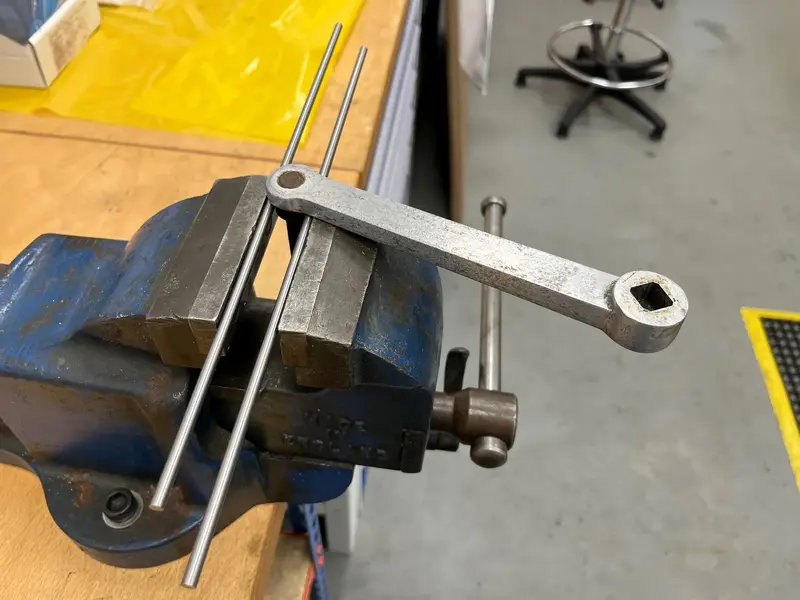
I thought I had some square-section silver steel in the stash at work, but I couldn't find it. I tried a couple of bits of 5mm silver steel rod instead and it worked a treat. You could use any hard bar for this, I reckon the shoulders on a couple of long black steel 5mm bolts would be fine. Just remember which way to turn the cranks to loosen (i.e. go and check your bike out in the bike shed, still not be 100% convinced so go back out with an Allen key and undo one side to check...)
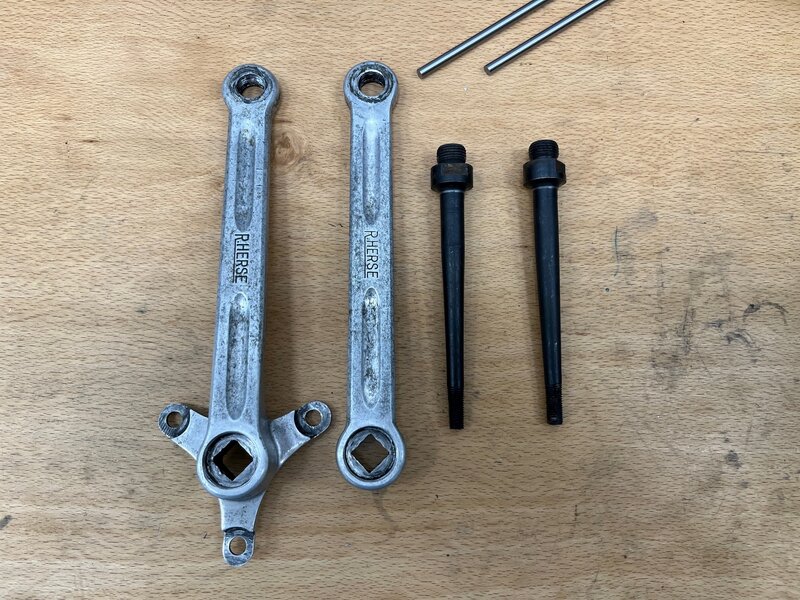
So that bit is good news. Quick shot of the cracks on both sides where the head meets the shaft (definitely cracks):
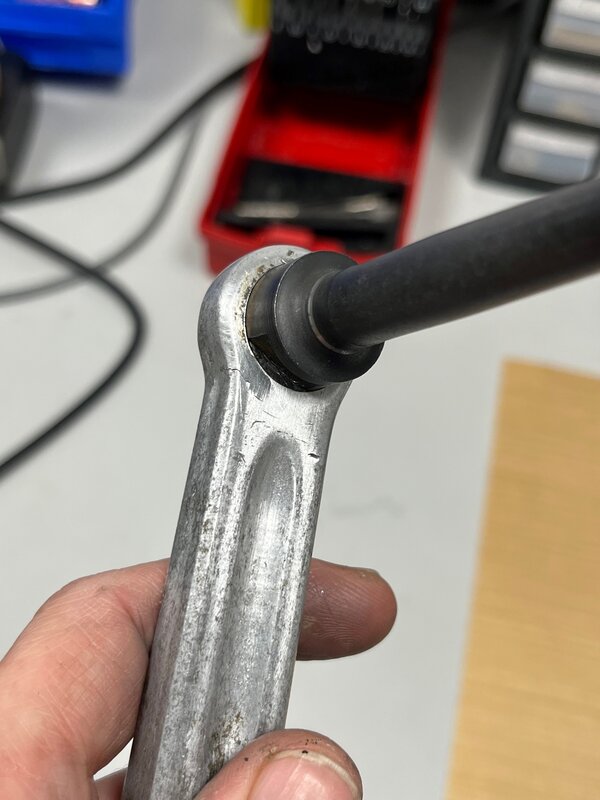
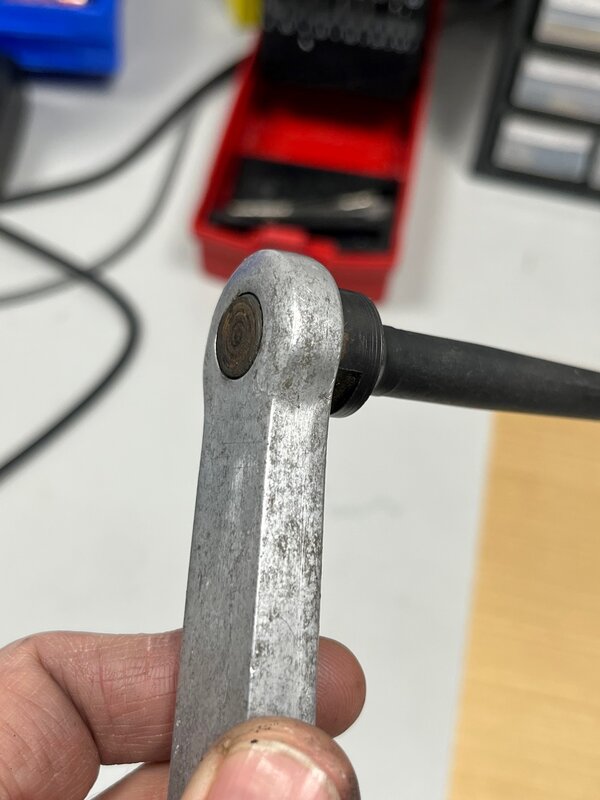
And measuring up - this is where it gets interesting. The non drive side pedal is definitely pointing downwards when the crank is pointing down, as if maybe something was dropped on it in the 6 o'clock position. I can see this when holding a square on the crank on the front or back face, despite the slight taper in the crank arm. If I clamp the back face of the taper to a flat surface I can also see it. What I can't do is measure these perpendicular to the taper itself, because I don't have anything I can accurately clamp a bottom bracket axle into, so I might need to do this in the frame itself and use a spirit level to look at the difference in the 12 o'clock and 6 o'clock positions.
Another interesting thing is both cranks appear to have a twist in them. With both cranks in the 3 o'clock position, the pedal axles point slightly down. Again, I can't measure this perpendicular to the taper itself so I can't tell yet if it's actually there, but it would be consistent with pedal deflection when riding out the saddle and standing on the pedals. I don't know how prone these very skinny alloy cranks were to twisting, but if you compare the RH crank next to a middle-of-the-line 1990s Shimano road crank, you can see how much more metal there is on the modern crank:
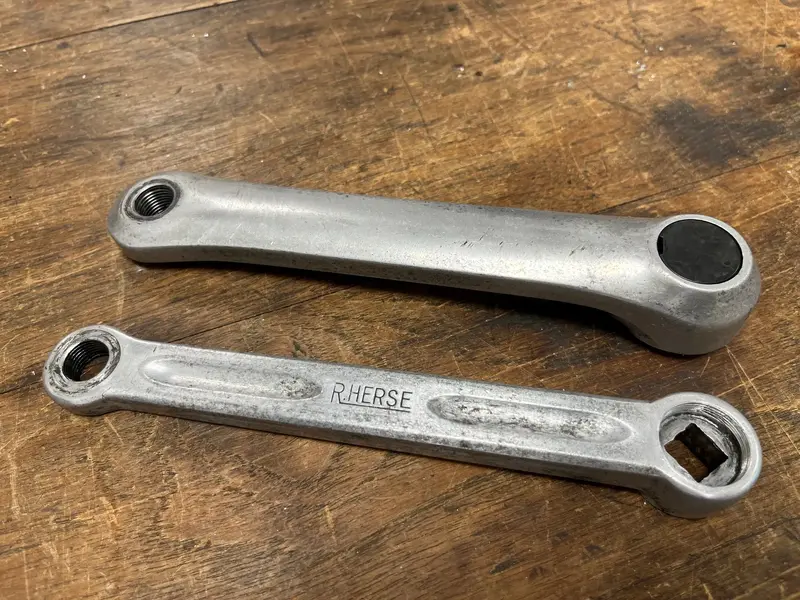
However, the Shimano crank which I thought was quite light, weighs 241g while the RH crank weighs 129g...
So that leads me conveniently onto the BB taper in case I need to change cranks. That Shimano crank goes on a JIS taper UN55. The RH cranks seem to have the same size square and taper angle, so that's good news:
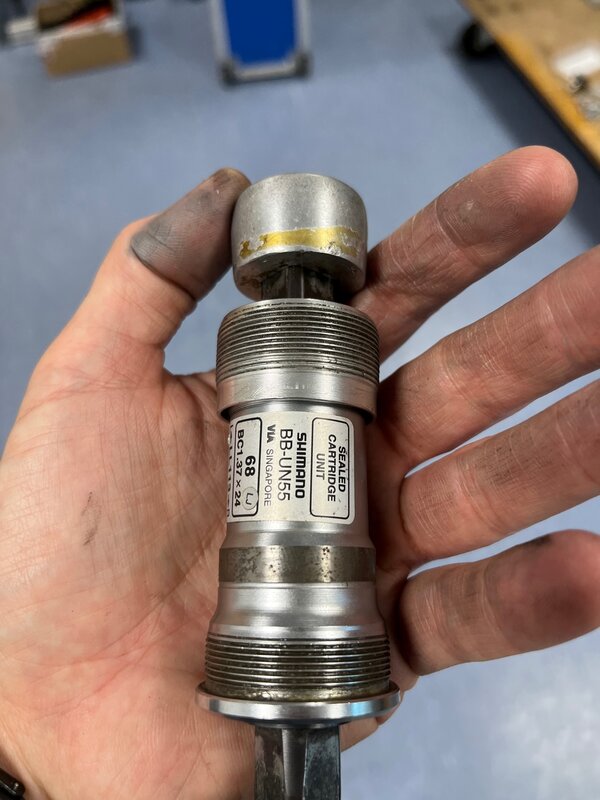
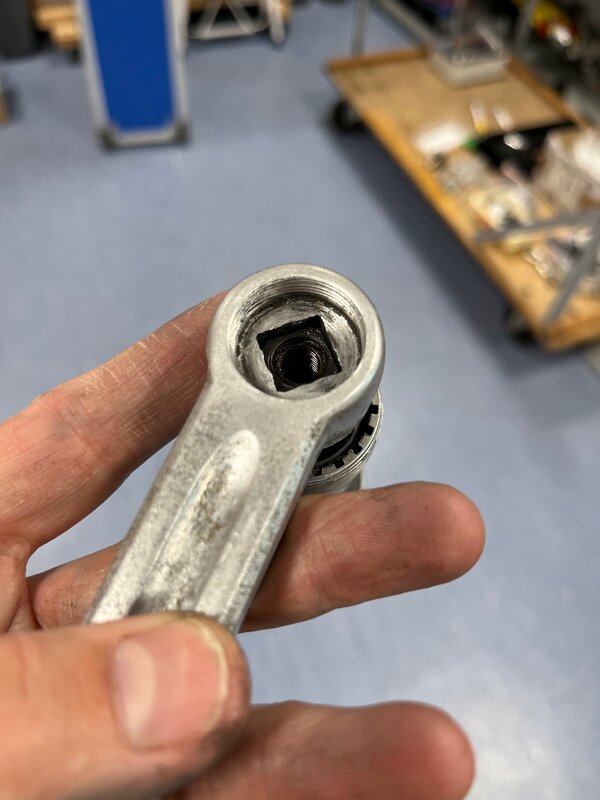
Shimano crank taper insertion depth for comparison:
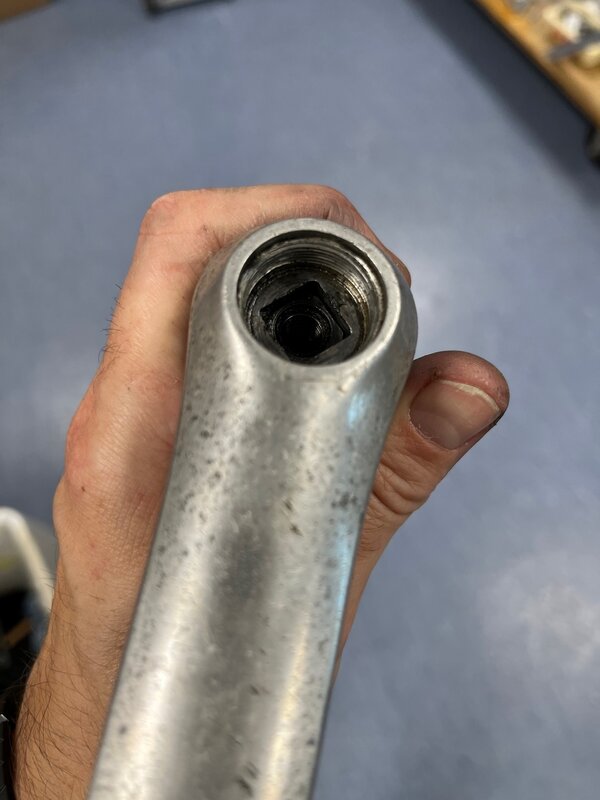
So I think at the moment I'm going to get the bike up and running or thereabouts with these cranks and then have a better squareness measure against the frame itself. I'm tempted to say if these cranks are thin enough that they twist in normal use, that they'll probably take a slight tweak without weakening them, especially if I do it slightly away from the area that's got what appears to be the cracks.

I thought I had some square-section silver steel in the stash at work, but I couldn't find it. I tried a couple of bits of 5mm silver steel rod instead and it worked a treat. You could use any hard bar for this, I reckon the shoulders on a couple of long black steel 5mm bolts would be fine. Just remember which way to turn the cranks to loosen (i.e. go and check your bike out in the bike shed, still not be 100% convinced so go back out with an Allen key and undo one side to check...)

So that bit is good news. Quick shot of the cracks on both sides where the head meets the shaft (definitely cracks):


And measuring up - this is where it gets interesting. The non drive side pedal is definitely pointing downwards when the crank is pointing down, as if maybe something was dropped on it in the 6 o'clock position. I can see this when holding a square on the crank on the front or back face, despite the slight taper in the crank arm. If I clamp the back face of the taper to a flat surface I can also see it. What I can't do is measure these perpendicular to the taper itself, because I don't have anything I can accurately clamp a bottom bracket axle into, so I might need to do this in the frame itself and use a spirit level to look at the difference in the 12 o'clock and 6 o'clock positions.
Another interesting thing is both cranks appear to have a twist in them. With both cranks in the 3 o'clock position, the pedal axles point slightly down. Again, I can't measure this perpendicular to the taper itself so I can't tell yet if it's actually there, but it would be consistent with pedal deflection when riding out the saddle and standing on the pedals. I don't know how prone these very skinny alloy cranks were to twisting, but if you compare the RH crank next to a middle-of-the-line 1990s Shimano road crank, you can see how much more metal there is on the modern crank:

However, the Shimano crank which I thought was quite light, weighs 241g while the RH crank weighs 129g...
So that leads me conveniently onto the BB taper in case I need to change cranks. That Shimano crank goes on a JIS taper UN55. The RH cranks seem to have the same size square and taper angle, so that's good news:


Shimano crank taper insertion depth for comparison:

So I think at the moment I'm going to get the bike up and running or thereabouts with these cranks and then have a better squareness measure against the frame itself. I'm tempted to say if these cranks are thin enough that they twist in normal use, that they'll probably take a slight tweak without weakening them, especially if I do it slightly away from the area that's got what appears to be the cracks.
Last edited:
dirttorpedo
Senior Retro Guru
I can't criticize him - i'm running velo orange 50.4 BCD cranks on my steel gravel bike and their drillium cranks on my ellis briggs now.Another gap in the market for Jan Heine; aged cranks
nstarmore
Retro Guru
Jan Heine is Rene Herse not VO, quite a different price range.I can't criticize him - i'm running velo orange 50.4 BCD cranks on my steel gravel bike and their drillium cranks on my ellis briggs now.
That said, I've nothing to criticise either, I can't afford Rene Herse parts but they are expensive for good reason.
I'm not here for that argument though, I just want to see more of this loveliness, cracks or no cracks
Thame Game
Retro Guru
I'm loving this restoration. Very inspiring. Thank you Jonny69, keep up the posts!
dirttorpedo
Senior Retro Guru
Yes, I am very aware of the price range difference, I was using it as more as a philosophical comparison.Jan Heine is Rene Herse not VO, quite a different price range.
That said, I've nothing to criticise either, I can't afford Rene Herse parts but they are expensive for good reason.
I'm not here for that argument though, I just want to see more of this loveliness, cracks or no cracks
It would definitely be better if you can use the original crankset. I suppose the key factor is whether this bike will be a rider or not.
nstarmore
Retro Guru
Ohh apologies, I clearly misunderstood what you were saying, I didn't mean to sound condesending or owt. Now where is that box I need to get back into?Yes, I am very aware of the price range difference, I was using it as more as a philosophical comparison.
TreaderSteve
Senior Retro Guru
Excellent progress, congratulations. If you're not jumping off kerbs or standing up on the pedals I'd be happy to use those cranks. They've had their beating in their time and not totally failed so some pottering to the pub won't kill them surely?!
Almost forgot. Bent pedal spindles seems fairly common on the vintage stuff. VAR did make a pedal checker - it was like a big heavy flywheel with the pedal threads in the middle. Presumably you put the pedal on the edge of a flat surface and spun the flywheel to see if it ran true.
Similar threads
- Replies
- 1
- Views
- 552
- Replies
- 34
- Views
- 3K
- Replies
- 15
- Views
- 5K
Latest posts
-
BoTM Bike of The Month May 2024 "Canadian Special". Time to vote
- Latest: GonaSovereign
-
-